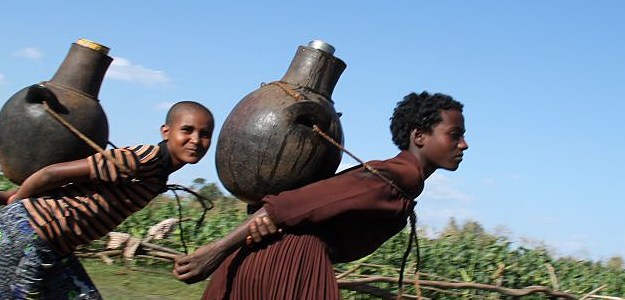People involved

Abbas Kazami Amiri
Identification of wind load and its fatigue effect prediction
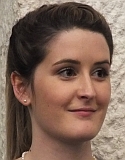
Miriam Bertola
Flood change attribution
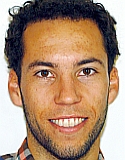
Andreas Buttinger-Kreuzhuber
Efficient and accurate shallow water simulations for flood management
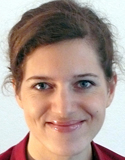
Julia Derx
Virus and organic carbon removal during river bank filtration
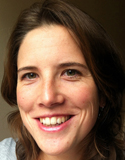
Linda Kuil
Socio-hydrology and systems analysis

David Lun
Flood change detection

Rui Tong
Hydrodynamic modelling in different cases
Selected publications
Bamer, F., Kazemi Amiri, A. and Bucher, C. (2017) A new model order reduction strategy adapted to nonlinear problems in earthquake engineering. Earthquake Engineering and Structural Dynamic, 46(4), 537-559.
Derx, J., Schijven, J., Sommer, R., Zoufal-Hruza, C. M., van Driezum, I. H., Reischer, G., Ixenmaier, S., Kirschner, A., Frick, C., de Roda Husman, A. M., Farnleitner, A., Blaschke, A. P. (2016) QMRAcatch: Human-associated faecal pollution and infection risk modelling for a river/floodplain environment. Journal of Environmental Quality, 45(4), 1205-1214.
Kazemi Amiri, A. and Bucher, C. (2017) A procedure for in situ wind load reconstruction from structural response only based on field-testing data. Journal of Wind Engineering and Industrial Aerodynamics, 167, 75–86.
Research supervisors
Prof. Alexia Fürnkranz-Prskawetz
Collaborators
Prof. Murugesu Sivapalan, University of Illinois, USA
Dr. Clifford I. Voss, U.S. Geological Survey, USA.
Research › Modelling and system identification
Models that represent water systems and processes are fundamental for understanding interactions and events. Developing new models and methods is at the heart of this cluster.
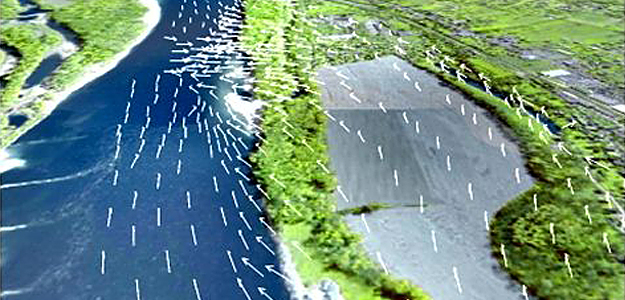
The modelling and system identification cluster group includes a diverse set of researchers from structural mechanics, hydrology, hydrogeology, socio-economics and water quality. The broad nature of the group provides an ideal forum for creative thinking and cross-fertilisation of modelling methods and approaches from different disciplines.
Modelling methodologies
Research students are using systems identification to understand system characteristics. Through carefully examining how different parts of a system respond to forcing information can be developed on how the entire system will respond. Maximilian Billmaier is using selective sensitivity analysis to understand structural strength. He has been running experiments with a portable shaker, and collecting data on how structural systems respond when shaken. This allows him to develop a model of how the system behaves under extreme loadings and back-calculate the strength of the entire structure.
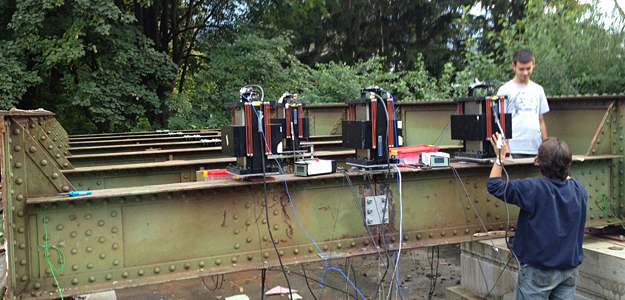
In a similar way, Abbas Kazami Amiri is modelling wind load on structures, investigating fatigue and predicting how it affects the expected lifetime of a structure. His first challenge involves identifying the wind loading, essential information, yet very difficult to measure directly in the environment. He is addressing this by measuring the displacement and acceleration response of the HOAL weather station structure to wind (see Hydrological Open Air Laboratory) and using this information to back-calculate the actual wind load.
Model reduction to maximise efficiency and reduce computational times is a critical theme in modelling complex systems. Franz Bamer examines the response of structures, such as buildings, bridges and dams, to earthquakes. His work has shown that model reduction can be reliable and effective in simulating the response of these structures.
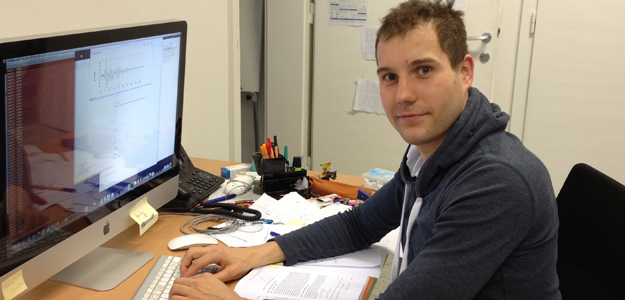
Approaches are developed by students studying the possibilities of system identification in a range of water related settings. The underlying equations, and methods to solve them, for different systems are often almost identical, for example, the elasticity of structures and movement of groundwater can be described by similar differential equations and solved with finite element models.
Coupled systems – Water, structures, the environment and people
Modelling coupled systems is particularly challenging because of the complexities and feedbacks involved. Magdalena Rogger is modelling the coupled surface-subsurface flow system in Alpine catchments to understand the characteristics of extreme events (see Risk). Somewhat similarly, although in a lowland environment, Christine Gschöpf models the coupled surface-subsurface system of the Lobau floodplains. Using 2-D hydrodynamic simulation she is predicting the water and sediment movement through the intricate canal system of the floodplain. This simulation helps optimise management strategies for ecosystem health in the area.
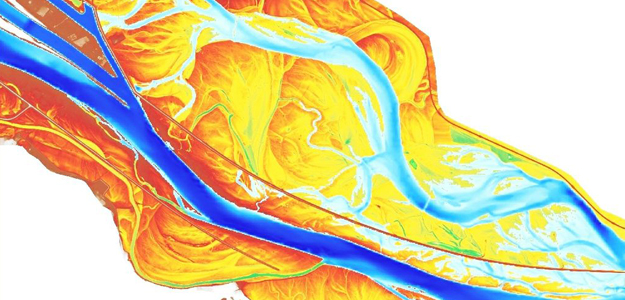
In the same area, Julia Derx analyses virus transport of stream-aquifer interactions (see Water and Health). Even more complex coupled systems are explored by Linda Kuil who models the non-linear relationships between people and water. Previous work tends to look in a singular way at how people affect water, or how water affects people. Linda is examining the interplay between the two aspects and the dynamic feedbacks (see Water resource management).
